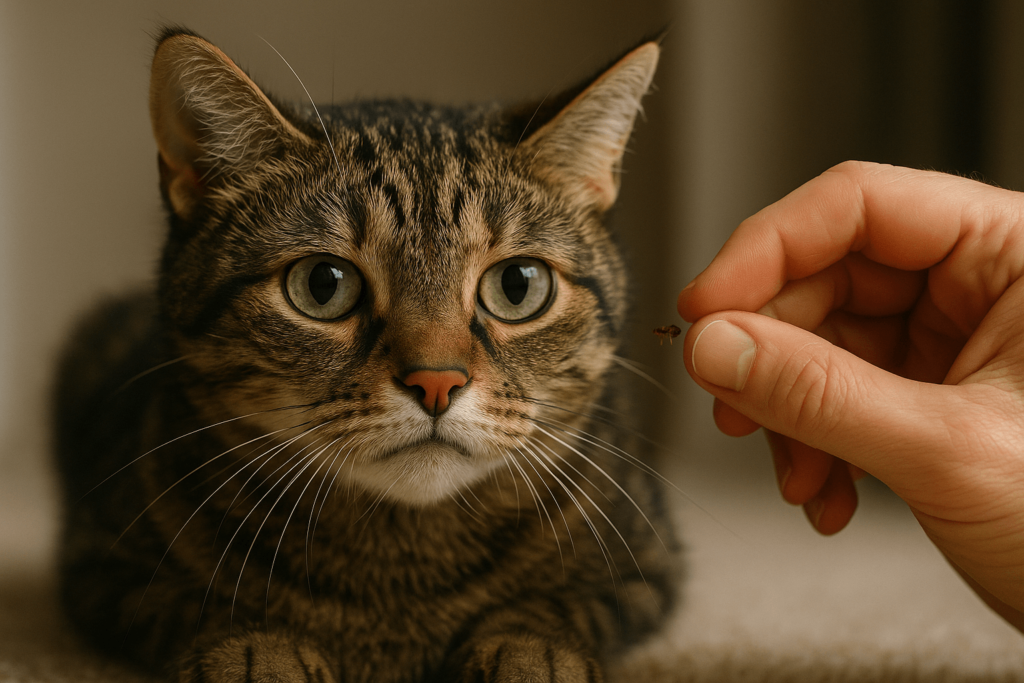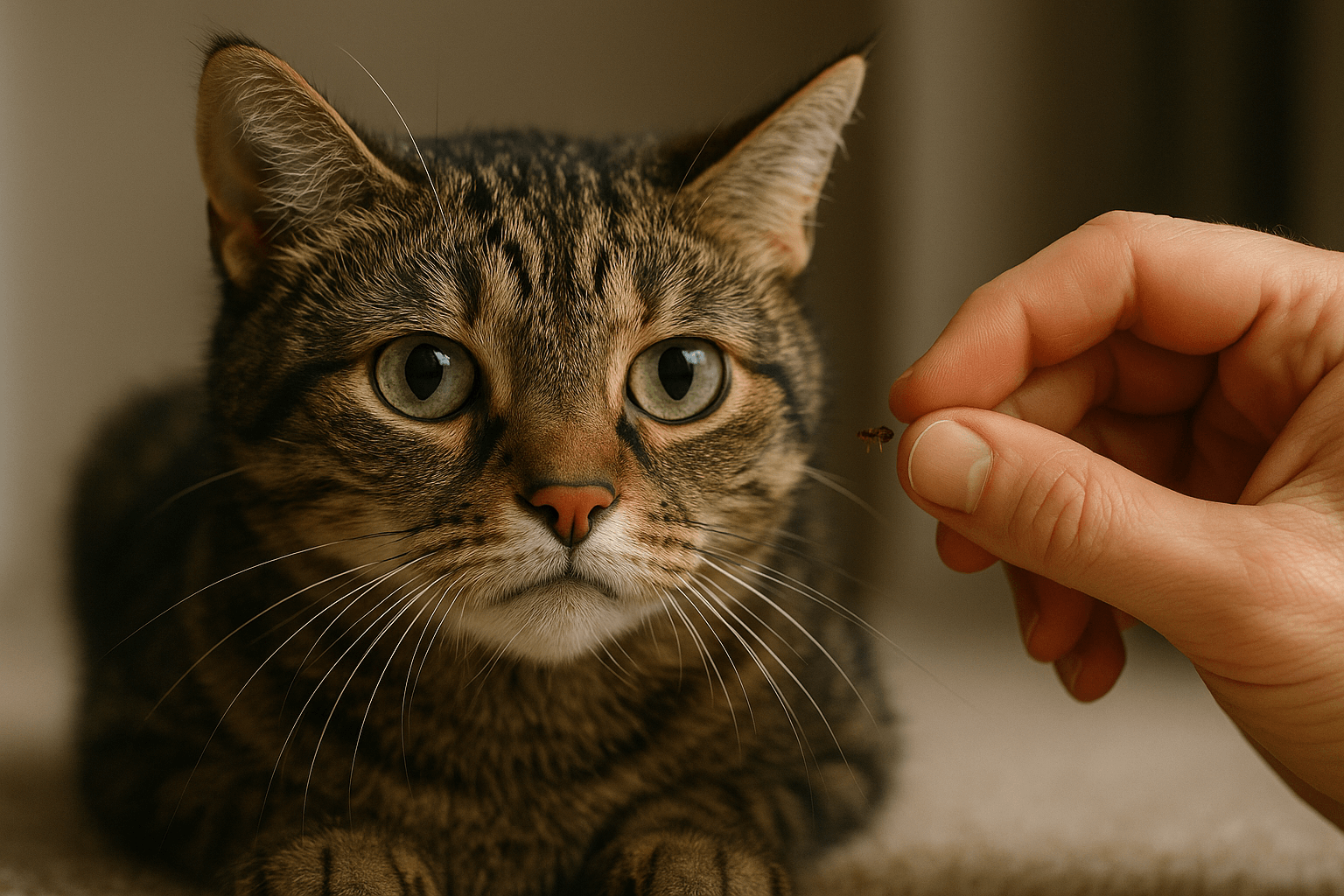Why Does My Cat Keep Getting Fleas?
Dealing with fleas on your cat can feel like an endless battle, leaving both you and your feline friend frustrated. Despite your best efforts to keep them clean and healthy, fleas seem to find their way back time and again. But why does this happen? Understanding the root causes of flea infestations is key to breaking the cycle and ensuring your cat stays comfortable and flea-free. This blog post dives into the reasons behind recurring flea problems, offering practical advice to tackle the issue once and for all. Let’s explore how to protect your cat from these pesky parasites and maintain a happy, healthy home environment.
Common Reasons Cats Get Fleas
Fleas are opportunistic parasites that thrive in environments where pets live. Identifying the factors that contribute to flea infestations can help you take preventive measures and address the problem effectively.
Outdoor Exposure:
Cats allowed outside are more likely to encounter fleas in grassy areas, gardens, or near wildlife. Fleas jump onto their fur and hitch a ride indoors.Contact with Infested Animals:
If your cat interacts with other pets or stray animals carrying fleas, they can easily pick up these parasites during play or grooming.Poor Environmental Hygiene:
Fleas thrive in dirty or cluttered environments. Carpets, bedding, and furniture that aren’t regularly cleaned can harbor flea eggs and larvae.Seasonal Changes:
Warmer months create ideal conditions for flea reproduction, leading to higher infestation rates during spring and summer.Inadequate Flea Prevention:
Using ineffective or inconsistent flea treatments leaves your cat vulnerable to reinfestation.
By addressing these common causes, you can significantly reduce the likelihood of your cat becoming a target for fleas.

How Fleas Spread and Multiply Quickly
Understanding the life cycle of fleas and how they spread can help you combat infestations more effectively. These tiny pests reproduce rapidly, making early intervention crucial.
Egg Laying:
A single female flea can lay up to 50 eggs per day, which fall off your cat and scatter around your home.Larval Stage:
Flea larvae hatch from eggs and feed on organic debris, such as pet dander and flea dirt, found in carpets and bedding.Pupae Development:
Larvae spin cocoons and enter the pupal stage, where they can remain dormant for weeks or even months until conditions are right.Adult Emergence:
Adult fleas emerge from their cocoons and immediately seek a host, often your cat, to begin feeding and reproducing.Environmental Hotspots:
Fleas thrive in warm, humid environments, making your home an ideal breeding ground if not properly treated.
Breaking the flea life cycle requires thorough cleaning and consistent prevention strategies to stop the cycle from repeating.
Check this guide 👉Dog Fleas vs Cat Fleas: Best 7 Health Tips!
Check this guide 👉Can You Use Cat Flea Treatment on Dogs? Best 7 Tips!
Check this guide 👉How Often Can You Flea Treat a Cat? Best 7 Expert Tips!
Prevention Tips for Fleas | Signs Your Cat Has Fleas |
|---|---|
Use vet-recommended flea treatments | Excessive scratching or biting |
Wash your cat’s bedding weekly | Visible flea dirt (black specks) |
Vacuum carpets and upholstery daily | Red, irritated skin or bald patches |
Keep your yard clean and trimmed | Restlessness or behavioral changes |
Avoid contact with stray animals | Fleas jumping on your cat’s fur |
Effective Ways to Treat Fleas on Your Cat
Once your cat has fleas, prompt treatment is essential to prevent discomfort and potential health issues. Here are some effective methods to eliminate fleas and restore your cat’s well-being.
Topical Treatments:
Apply vet-approved topical solutions to your cat’s skin, targeting the neck area to avoid licking.Oral Medications:
Prescription oral tablets kill fleas quickly and are often easier to administer than topical treatments.Flea Combs:
Use a fine-toothed flea comb to physically remove fleas and flea dirt from your cat’s fur.Bathing with Flea Shampoo:
Specialized flea shampoos can help wash away fleas but should be used sparingly to avoid drying out your cat’s skin.Environmental Cleaning:
Wash all fabrics your cat comes into contact with, including bedding and blankets, in hot water to kill remaining fleas and eggs.
Combining these treatments ensures a comprehensive approach to eradicating fleas from your cat and home.
Preventing Future Flea Infestations
Preventing fleas from returning requires ongoing effort and vigilance. These proactive steps can help you keep your cat and home flea-free for good.
Regular Flea Preventatives:
Administer monthly flea preventatives as recommended by your veterinarian to maintain protection year-round.Deep Cleaning Routine:
Regularly vacuum carpets, rugs, and furniture, paying special attention to corners and crevices where fleas hide.Yard Maintenance:
Keep your yard free of debris and overgrown vegetation, which can attract fleas and other pests.Limit Outdoor Time:
Supervise outdoor playtime or consider creating a secure outdoor enclosure to minimize exposure to fleas.Monitor Other Pets:
Ensure all pets in your household are treated for fleas simultaneously to prevent cross-infestation.
By staying proactive, you can create an inhospitable environment for fleas and protect your cat from future infestations.
Common Misconceptions About Fleas
Many myths surround fleas, leading to misunderstandings about how to manage them effectively. Dispelling these misconceptions is vital for proper flea control.
Myth: Fleas Only Affect Dirty Homes:
Fleas can infest even the cleanest homes, as they are attracted to warmth and hosts rather than dirt.Myth: Flea Collars Alone Are Enough:
While flea collars can help, they often don’t provide full-body protection and should be paired with other treatments.Myth: Fleas Die Off in Winter:
Fleas can survive indoors year-round, especially in heated homes, making prevention necessary even in colder months.Myth: Cats Groom Themselves Clean of Fleas:
While grooming helps, it’s not enough to eliminate a full-blown infestation without additional treatment.Myth: Fleas Only Bite Pets:
Fleas can bite humans too, causing itchy, red bumps and spreading discomfort throughout the household.
Understanding the truth behind these misconceptions empowers you to tackle flea problems more effectively.
Natural Remedies for Flea Control
For those seeking natural alternatives to chemical treatments, several remedies can complement traditional flea control methods.
Diatomaceous Earth:
Food-grade diatomaceous earth sprinkled on carpets and bedding dehydrates fleas and their eggs naturally.Apple Cider Vinegar Spray:
Diluted apple cider vinegar sprayed on your cat’s fur acts as a mild flea repellent, though it shouldn’t replace vet-recommended treatments.Herbal Flea Collars:
Some herbal collars infused with essential oils like lavender or cedarwood offer natural flea deterrents.Rosemary Baths:
Adding rosemary to your cat’s bathwater can help repel fleas while soothing irritated skin.Neem Oil:
Neem oil, when diluted properly, disrupts the flea life cycle and serves as a natural insecticide.
While natural remedies can be helpful, always consult your vet before trying them, especially for sensitive cats.
How Fleas Impact Your Cat’s Health
Fleas are more than just a nuisance—they can have serious consequences for your cat’s health if left untreated. Understanding these impacts underscores the importance of flea prevention.
Allergic Dermatitis:
Flea bites can trigger severe allergic reactions, leading to intense itching, hair loss, and skin infections.Anemia in Kittens:
Heavy flea infestations can cause anemia in kittens due to blood loss from constant feeding.Tapeworm Infections:
Cats can ingest fleas while grooming, leading to tapeworm infections that require veterinary treatment.Behavioral Changes:
Persistent flea bites can make cats irritable, restless, or aggressive due to constant discomfort.Secondary Infections:
Scratching and biting at flea bites can result in open wounds, increasing the risk of bacterial infections.
Addressing fleas promptly not only improves your cat’s comfort but also safeguards their long-term health.
Frequently Asked Questions About Fleas on Cats
Can indoor cats get fleas?
Yes, fleas can hitchhike indoors on clothing, shoes, or other pets, making indoor cats susceptible to infestations.
Are fleas dangerous for my cat?
While not always deadly, fleas can cause skin irritation, allergies, and even transmit diseases like tapeworms.
How often should I treat my cat for fleas?
Most flea preventatives are administered monthly, but consult your vet for personalized recommendations.
Can I use dog flea products on my cat?
No, many dog flea treatments contain ingredients toxic to cats. Always use products specifically designed for cats.
What should I do if my cat has a reaction to flea treatment?
Contact your veterinarian immediately if your cat shows signs of illness or discomfort after treatment.
Breaking the Flea Cycle for Good
Fleas may be persistent, but with the right knowledge and tools, you can break the cycle and keep your cat happy and healthy. By understanding why cats get fleas, treating infestations promptly, and implementing preventive measures, you can create a flea-free environment that benefits both your pet and your home. Remember, consistency is key—regular care and vigilance will go a long way in protecting your feline companion from these troublesome parasites. With patience and dedication, you’ll soon enjoy a peaceful, flea-free life together.
Canned Pumpkin for Cat Diarrhea: Best 7 Expert Tips! Natural remedy to firm stools, soothe upset bellies, and support gut health safely.
Can a Cat Give You Scabies? Best 7 Expert Tips! Discover the truth about feline mites, human skin risks, and how to protect yourself—without panic.
Cat Flea vs Human Flea: Best 7 Expert Tips! Discover the truth about bites, species, and how to eliminate infestations for good.
Weird Cat Behaviors: Best 7 Expert Tips! Discover why cats do strange things—and how to understand, not punish, their instincts for a happier home.





